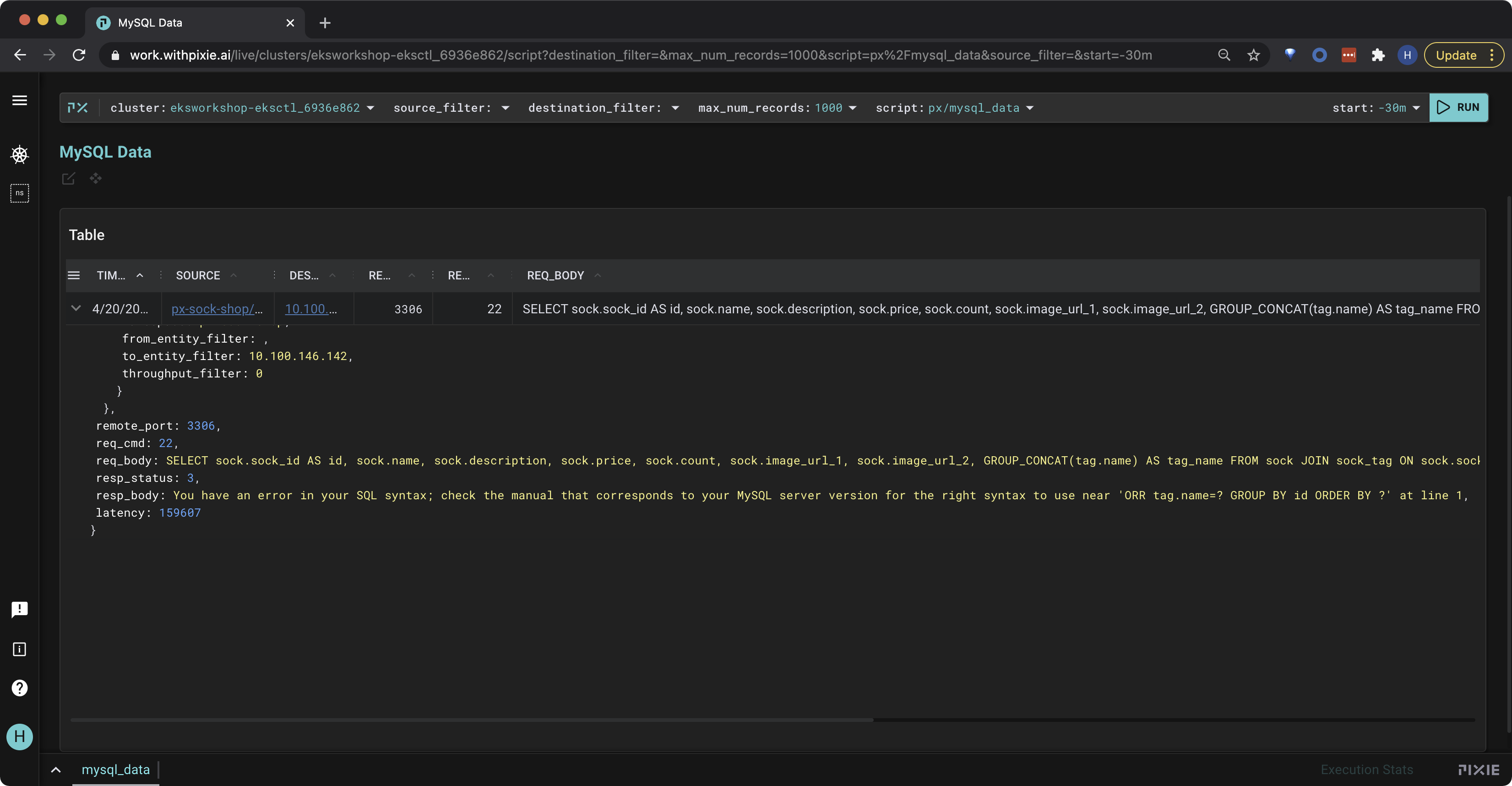Inspect the MySQL Request
This workshop has been deprecated and archived. The new Amazon EKS Workshop is now available at www.eksworkshop.com.
From the demo app’s YAML file, we know that the catalog service talks to a MySQL database. Let’s inspect the catalog service’s mysql requests to see if we can get more information about the type of database connection error.
Select the px/mysql_data script from the script drop-down menu. This script shows all of the mysql requests Pixie has traced in the cluster. Let’s filter these requests.
Modify the script’s start_time to -30m or any window that will include when you triggered the bug in the Sock Shop app.
Open the script editor using ctrl+e (Windows, Linux) or cmd+e (Mac).
On line 34, add the following line to filter the mysql requests to just those with errors:
# Filter requests to only include those with an error code.
df = df[df.resp_status == 3]
Make sure that the new lines just added match the indentation of the existing lines. If not, you will get an invalid syntax error when running the script.
Re-run the script with the RUN button (top right of the page), or using the keyboard shortcut: ctrl+enter (Windows, Linux) or cmd+enter (Mac).
The output should show one or more requests with errors.

Click on the table row to see the row data in json format.
Scroll down to the resp_body json key, and you will see that our error is a SQL syntax error. In particular the OR condition was misspelled as ORR.
You have an error in your SQL syntax; check the manual that corresponds to your MySQL server version for the right syntax to use near 'ORR tag.name=? GROUP BY id ORDER BY ?' at line 1,
Congratulations! You’ve used Pixie to find the bug in the microservices app!